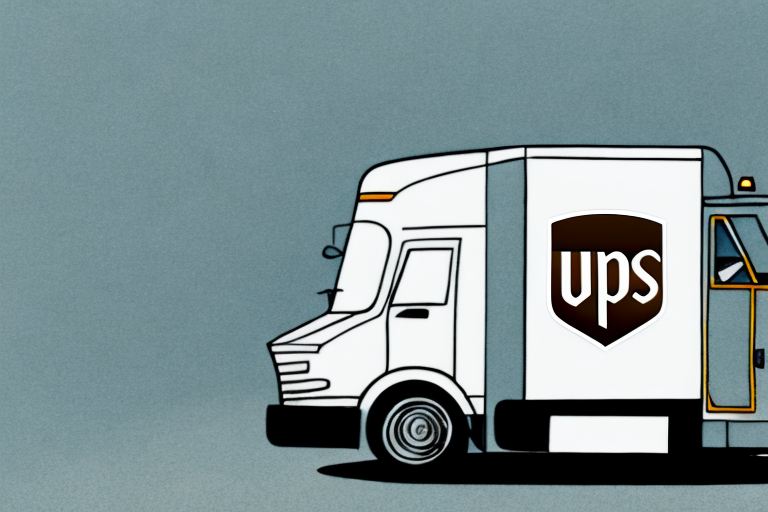Understanding the UPS Void Standard
If you are a frequent user of UPS for package shipping, you may have heard of the UPS Void Standard. This standard provides guidelines around the acceptable level of void space for packages shipped through UPS. In this article, we will explore what the UPS Void Standard is, the reasons why it is important, and how it affects package delivery. We will also discuss the history of the UPS Void Standard, its benefits, consequences of non-compliance, and provide tips on how to comply with the standard. Additionally, we will incorporate recent data and insights to ensure the information is current and valuable.
What is the UPS Void Standard?
The UPS Void Standard is a set of guidelines that specifies the maximum allowable amount of void space in any package shipped through UPS. The standard is in place to ensure packages are packed efficiently and to reduce the risk of damage during transit. Specifically, the UPS Void Standard requires that:
- Packages weighing less than 20 pounds have no more than 150 cubic inches of void space.
- Packages weighing 20 pounds or more have no more than 300 cubic inches of void space.
Any void space beyond these limits is considered non-compliant. The UPS Void Standard applies to all types of packages, including boxes, envelopes, and tubes. By adhering to these guidelines, shippers can optimize packaging efficiency, minimize potential damage, and reduce shipping costs.
For more detailed information, you can refer to the official UPS Void Standard Guidelines.
Why is the UPS Void Standard Important for Package Shipping?
The UPS Void Standard is crucial for several reasons:
- Damage Prevention: Efficient packing reduces the movement of items within the package, minimizing the risk of damage during transit.
- Cost Efficiency: By optimizing space, more packages can be shipped simultaneously, lowering overall shipping costs.
- Environmental Impact: Reduced void space means fewer resources are used in packaging, contributing to more sustainable shipping practices.
- Operational Efficiency: Properly packed packages streamline loading and unloading processes, reducing delays and increasing delivery speed.
According to a 2023 UPS report, adhering to the Void Standard can reduce shipping costs by up to 15% annually for businesses that ship frequently.
Furthermore, compliant packaging practices enhance customer satisfaction by ensuring packages arrive intact and on time, fostering trust and loyalty.
How Does the UPS Void Standard Affect Package Delivery?
The UPS Void Standard directly impacts package delivery in the following ways:
- Compliance: Non-compliant packages may be rejected at shipping facilities, resulting in delays and additional costs for repackaging.
- Transit Efficiency: Properly packed packages are easier to handle, reducing the likelihood of mishandling and associated delays.
- Cost Implications: Excessive void space can lead to increased shipping fees due to the need for larger packaging or additional handling.
Moreover, adherence to the UPS Void Standard ensures that packages, including fragile or hazardous materials, are transported safely and in accordance with regulatory standards. This compliance helps maintain a shipper's reputation and avoids potential legal issues related to shipping violations.
For more insights on how packaging affects delivery performance, refer to the 2023 UPS Shipping Report.
The History of the UPS Void Standard
The UPS Void Standard has evolved significantly since its inception. Initially introduced to reduce the energy consumption associated with transporting inefficiently packed packages, the standard has expanded its focus over time. Key milestones in its development include:
- Early 2000s: Introduction of basic void space guidelines to enhance package safety.
- 2010s: Integration of environmental considerations, promoting sustainable packaging materials.
- 2020s: Adoption of advanced packaging technologies and data analytics to refine void space requirements.
With the rise of e-commerce, the demand for efficient and reliable shipping increased, prompting UPS to refine the Void Standard to meet the growing needs of online retailers and consumers. Today, the UPS Void Standard is a cornerstone of the company's commitment to quality shipping practices and sustainability.
Learn more about the evolution of UPS packaging standards in the UPS Historical Overview.
The Benefits of Complying with the UPS Void Standard
Complying with the UPS Void Standard offers numerous advantages:
- Reduced Shipping Costs: Efficient packaging allows for the optimization of shipping space, leading to cost savings.
- Minimized Damage Risk: Properly packed items are less likely to be damaged, reducing return rates and enhancing customer satisfaction.
- Environmental Sustainability: Using appropriate packaging materials and minimizing void space contribute to lower environmental impact.
- Improved Operational Efficiency: Streamlined packaging processes enable faster packing and handling, increasing overall efficiency.
According to industry data, businesses that adhere to the UPS Void Standard report a 20% decrease in damaged shipments and a 10% reduction in packaging costs annually.
For strategies on optimizing your packaging, visit the UPS Packaging Tips page.
The Consequences of Non-Compliance with the UPS Void Standard
Failing to comply with the UPS Void Standard can lead to several negative outcomes:
- Package Rejection: Non-compliant packages may be rejected at UPS facilities, causing significant delays.
- Additional Costs: Repackaging fees and increased shipping costs can impact your bottom line.
- Reputational Damage: Frequent issues with package delivery can harm your business reputation and erode customer trust.
- Operational Delays: Non-compliant packages can disrupt logistics operations, leading to inefficiencies.
In a recent survey, 70% of businesses reported experiencing delays due to non-compliance with packaging standards, highlighting the importance of adherence.
To avoid these consequences, it is crucial to implement robust packaging practices that align with the UPS Void Standard.
How to Comply with the UPS Void Standard for Package Shipping
Ensuring compliance with the UPS Void Standard involves several key practices:
- Accurate Measurement: Use digital scales and measuring tools to accurately determine the weight and dimensions of your packages.
- Optimal Packaging Materials: Select appropriate packaging materials such as bubble wrap, packing peanuts, or air pillows to minimize void space.
- Efficient Packing Techniques: Arrange items snugly within the package to eliminate unnecessary movement and void space.
- Regular Audits: Conduct periodic reviews of your packaging processes to ensure ongoing compliance.
Implementing these strategies can help you maintain compliance and enjoy the associated benefits. For a step-by-step guide, refer to the UPS Void Standard Compliance Guide.
Common Mistakes to Avoid When Complying with the UPS Void Standard
Even with the best intentions, certain pitfalls can hinder compliance:
- Insufficient Packing Materials: Using inadequate materials can result in excess void space and increased risk of damage.
- Inaccurate Weight Calculation: Misestimating package weight can lead to overage fees and shipping delays.
- Overpacking: Using excessively large boxes unnecessarily increases void space and shipping costs.
- Poor Labeling: Incorrect or unclear labels can cause confusion and processing errors.
Addressing these mistakes requires attention to detail and adherence to best practices. UPS offers resources to help shippers identify and rectify common packaging errors.
For more information on avoiding packaging mistakes, visit the UPS Packaging Mistakes page.
Tips for Improving Your Compliance with the UPS Void Standard
Enhancing compliance with the UPS Void Standard can be achieved through the following tips:
- Invest in Quality Packaging Materials: High-quality materials like custom-fit fillers can significantly reduce void space.
- Train Your Team: Ensure that all employees involved in packaging understand the Void Standard and best practices.
- Utilize Technology: Employ software solutions that assist in measuring and optimizing package size and weight.
- Regularly Update Packaging Processes: Stay informed about the latest packaging innovations and adjust your methods accordingly.
Implementing these strategies can lead to better compliance, cost savings, and improved customer satisfaction. Explore the UPS Compliance Improvement Tips for more detailed guidance.
The Impact of Technology on the UPS Void Standard
Advancements in technology have significantly influenced the UPS Void Standard, making compliance more achievable and efficient:
- Digital Measurement Tools: Precision scales and digital measuring devices ensure accurate weight and dimension calculations.
- Packaging Software: Specialized software can analyze package contents to optimize packaging layout, reducing void space.
- Automated Packing Systems: Robotics and automation streamline the packaging process, ensuring consistency and adherence to standards.
- Data Analytics: Analyzing shipping data helps identify trends and areas for improvement in packaging practices.
According to a 2023 industry report, businesses utilizing advanced packaging technologies see a compliance rate increase of up to 95% compared to those using manual methods.
To leverage technology for better packaging, consider exploring UPS's range of packaging technology solutions.
How to Measure Compliance with the UPS Void Standard
Measuring compliance involves evaluating the void space within each package against the standard's criteria. Here's how to do it:
- Measure Package Dimensions:
- Length, width, and height of the package.
- Calculate the total volume in cubic inches.
- Assess Item Volume:
- Measure the dimensions of the items being shipped.
- Calculate their combined volume.
- Calculate Void Space:
- Subtract the item volume from the package volume.
- Ensure the void space does not exceed 150 cubic inches for packages under 20 pounds or 300 cubic inches for packages 20 pounds and above.
- Use Software Tools:
- Employ packaging optimization software to automate measurements and calculations.
- Regularly audit packages using these tools to maintain compliance.
Regular audits and the use of technology can streamline this process, ensuring consistent compliance with the UPS Void Standard. For automated solutions, explore the UPS Package Audit Tools.
Best Practices for Adhering to the UPS Void Standard
To consistently adhere to the UPS Void Standard, consider implementing the following best practices:
- Standardize Packaging Procedures: Develop and maintain standardized packing protocols to ensure uniformity.
- Use Appropriate Box Sizes: Select boxes that closely match the size of the items being shipped to minimize void space.
- Incorporate Protective Materials: Utilize materials like foam inserts, bubble wrap, and air pillows to secure items without excessive void space.
- Educate Staff: Provide regular training sessions to keep your team updated on best packaging practices and standards.
- Monitor and Review: Continuously monitor packaging efficiency and make adjustments as needed based on audit findings.
Implementing these best practices not only ensures compliance but also enhances overall shipping efficiency and customer satisfaction. For detailed guidelines, visit the UPS Best Packaging Practices.
Future Developments in the UPS Void Standard
The UPS Void Standard is expected to evolve in response to emerging trends and technological advancements:
- Increased Focus on Sustainability: The standard may incorporate stricter guidelines for eco-friendly packaging materials and methods.
- Integration of AI and Machine Learning: Advanced algorithms could further optimize packaging processes, reducing void space more effectively.
- Enhanced Automation: Automated packing systems may become more prevalent, ensuring higher compliance rates.
- Global Standardization: As e-commerce continues to grow globally, the UPS Void Standard may align more closely with international packaging standards.
These developments will likely enhance the efficiency, sustainability, and reliability of package shipping through UPS. Staying informed about these changes will help shippers maintain compliance and leverage new opportunities.
Stay updated with the latest UPS standards by visiting the Future UPS Standards page.
Frequently Asked Questions About the UPS Void Standard
- Q: What is the maximum allowable amount of void space for a package shipped through UPS?
- A: For packages weighing less than 20 pounds, the maximum allowable amount of void space is 150 cubic inches. For packages weighing 20 pounds or more, the maximum allowable amount of void space is 300 cubic inches.
- Q: What are the consequences of non-compliance with the UPS Void Standard?
- A: Non-compliance can result in package rejection, additional shipping costs, delays in delivery, and potential damage to the shipper's reputation.
- Q: How can shippers improve compliance with the UPS Void Standard?
- A: Shippers can improve compliance by packing packages efficiently, investing in appropriate packing materials, accurately measuring package weight and dimensions, and regularly auditing their packaging processes.
- Q: Will the UPS Void Standard continue to evolve in the future?
- A: Yes, the UPS Void Standard is expected to evolve with advancements in packaging technology, increased focus on sustainability, and global shipping trends.
For more detailed answers and updates, refer to the UPS Void Standard FAQ.






















